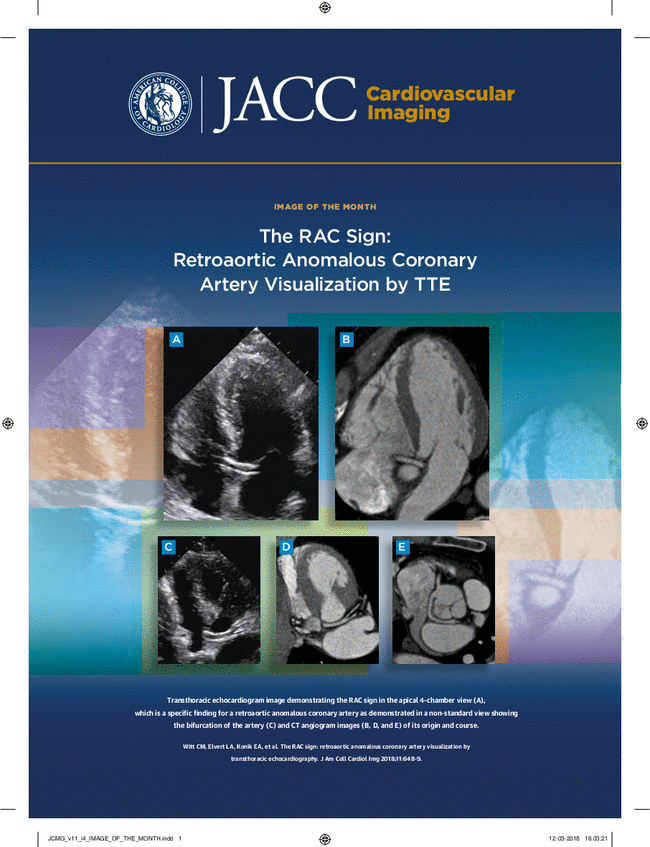浆细胞治疗后心肌轻链淀粉样蛋白负荷的变化。
IF 15.2
1区 医学
Q1 CARDIAC & CARDIOVASCULAR SYSTEMS
引用次数: 0
摘要
背景:目前轻链(AL)淀粉样变性的治疗目标是浆细胞病变,但它们对心肌淀粉样纤维负荷的影响仍不明确。目的评估血浆细胞定向化疗后心肌淀粉样蛋白负荷的纵向变化。方法:本前瞻性研究纳入了81例近期确诊、活检证实的AL淀粉样变性患者(58例AL淀粉样心肌病和23例AL淀粉样变性无心肌病),这些患者在基线、6个月(n = 52)和/或12个月(n = 37)时接受了一系列18F-florbetapir正电子发射断层扫描/计算机断层扫描和心脏磁共振(包括细胞外体积[ECV])检查。分子淀粉样蛋白负荷估计为注射剂量的18F-florbetapir百分比(%ID),变化以绝对和相对%ID变化表示。心脏生物标志物反应被定义为当基线NT-proBNP≥650 ng/L时,n端前b型利钠肽(NT-proBNP) >降低30%,>降低300 ng/L。所有的变化比较在患者中进行配对。结果在AL淀粉样蛋白心肌病中,淀粉样蛋白负担在治疗开始后6个月和12个月显著下降(中位绝对[相对]变化%ID: -0.3% [-13%]; P = 0.002; -0.3% [15%]; P = 0.003)。%ID的变化与12个月NT-proBNP的变化适度相关(ρ = 0.531)。值得注意的是,在生物标志物应答者中,%ID显著降低(P < 0.001),而在无应答者中没有变化(P = 0.542)。相比之下,生物标志物应答者(P = 0.193)和无应答者(P = 0.695)的ECV没有变化。在无心肌病的AL淀粉样变性中,%ID没有变化(P = 0.523),而ECV增加(P = 0.011)。结论:通过18F-florbetapir %ID估算的心肌AL淀粉样蛋白负担在接受浆细胞治疗的患者中降低,并在6个月时可检测到。分子淀粉样蛋白和ECV的改变可能反映了AL淀粉样变性患者心肌重构的不同方面。(原发性淀粉样心肌病分子影像学[MICA]: NCT02641145)。本文章由计算机程序翻译,如有差异,请以英文原文为准。
Changes in Myocardial Light Chain Amyloid Burden After Plasma Cell Therapy.
BACKGROUND
Current therapies for light chain (AL) amyloidosis target the plasma cell dyscrasia, but their effect on myocardial amyloid fibril burden remains poorly defined.
OBJECTIVES
The authors aimed to assess longitudinal changes in myocardial amyloid burden after plasma cell-directed chemotherapy.
METHODS
This prospective study included 81 patients (58 with AL amyloid cardiomyopathy and 23 with AL amyloidosis without cardiomyopathy) with recently diagnosed, biopsy-proven AL amyloidosis, who underwent serial 18F-florbetapir positron emission tomography/computed tomography and cardiac magnetic resonance (including extracellular volume [ECV]) at baseline, 6 months (n = 52), and/or 12 months (n = 37). Molecular amyloid burden was estimated as 18F-florbetapir percentage injected dose (%ID), and changes are presented as absolute and relative %ID changes. Cardiac biomarker response was defined as a reduction in N-terminal pro-B-type natriuretic peptide (NT-proBNP) >30% and >300 ng/L when baseline NT-proBNP ≥650 ng/L. All change comparisons were paired within patients.
RESULTS
In AL amyloid cardiomyopathy, amyloid burden decreased significantly at 6 and 12 months after therapy initiation (median absolute [relative] change %ID: -0.3% [-13%]; P = 0.002; and -0.3% [15%]; P = 0.003). Changes in %ID correlated moderately with changes in NT-proBNP at 12 months (ρ = 0.531). Of note, %ID decreased significantly among biomarker responders (P < 0.001), whereas there was no change in nonresponders (P = 0.542). In contrast, ECV did not change in biomarker responders (P = 0.193) or nonresponders (P = 0.695). In AL amyloidosis without cardiomyopathy, %ID did not change (P = 0.523), whereas ECV increased (P = 0.011).
CONCLUSIONS
Myocardial AL amyloid burden estimated by 18F-florbetapir %ID decreases in participants undergoing plasma cell therapy and is detectable at 6 months. Molecular amyloid and ECV changes probably reflect distinct aspects of myocardial remodeling in AL amyloidosis. (Molecular Imaging of Primary Amyloid Cardiomyopathy [MICA]: NCT02641145).
求助全文
通过发布文献求助,成功后即可免费获取论文全文。
去求助
来源期刊

JACC. Cardiovascular imaging
CARDIAC & CARDIOVASCULAR SYSTEMS-RADIOLOGY, NUCLEAR MEDICINE & MEDICAL IMAGING
CiteScore
24.90
自引率
5.70%
发文量
330
审稿时长
4-8 weeks
期刊介绍:
JACC: Cardiovascular Imaging, part of the prestigious Journal of the American College of Cardiology (JACC) family, offers readers a comprehensive perspective on all aspects of cardiovascular imaging. This specialist journal covers original clinical research on both non-invasive and invasive imaging techniques, including echocardiography, CT, CMR, nuclear, optical imaging, and cine-angiography.
JACC. Cardiovascular imaging highlights advances in basic science and molecular imaging that are expected to significantly impact clinical practice in the next decade. This influence encompasses improvements in diagnostic performance, enhanced understanding of the pathogenetic basis of diseases, and advancements in therapy.
In addition to cutting-edge research,the content of JACC: Cardiovascular Imaging emphasizes practical aspects for the practicing cardiologist, including advocacy and practice management.The journal also features state-of-the-art reviews, ensuring a well-rounded and insightful resource for professionals in the field of cardiovascular imaging.
 求助内容:
求助内容: 应助结果提醒方式:
应助结果提醒方式:


